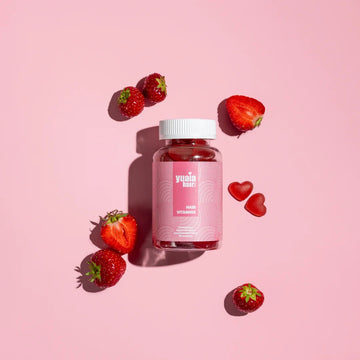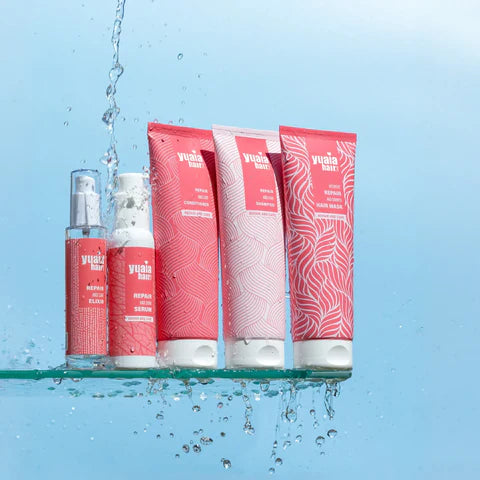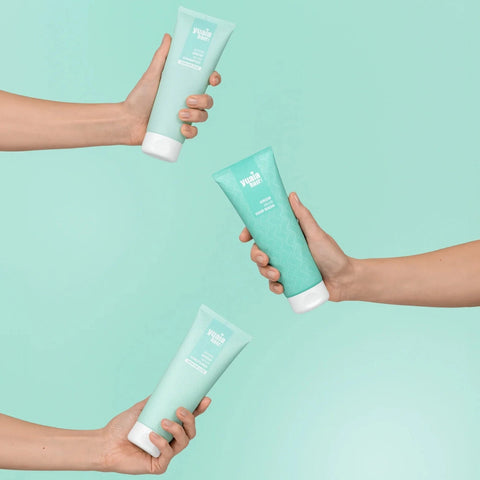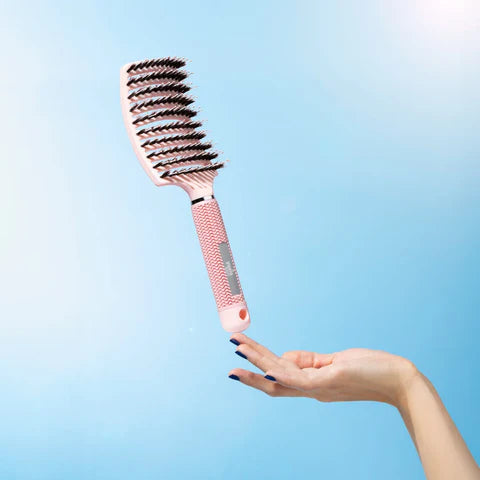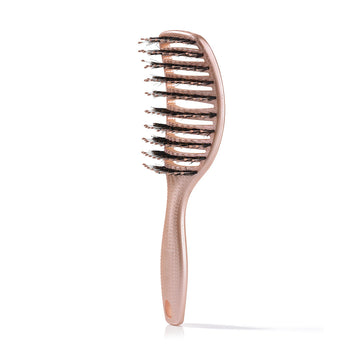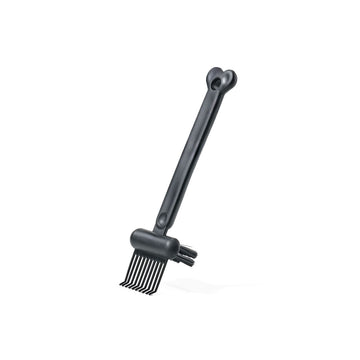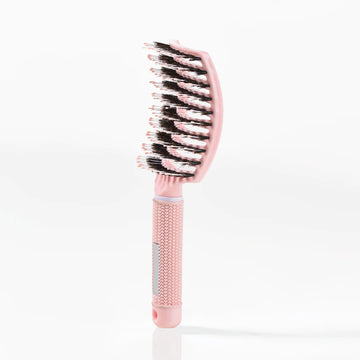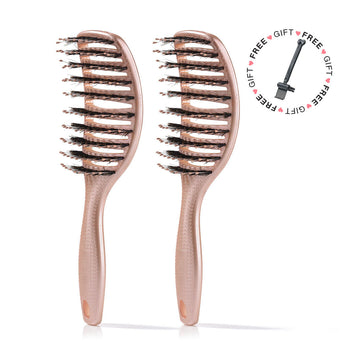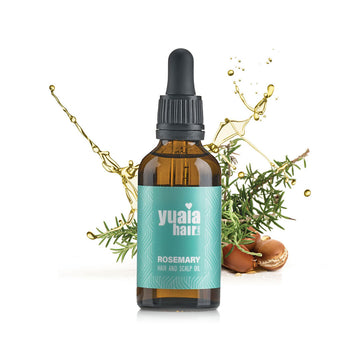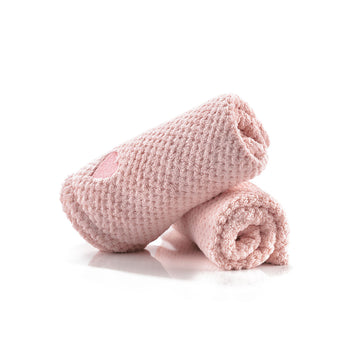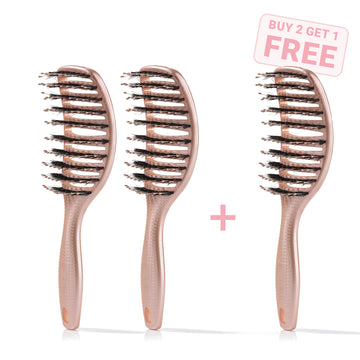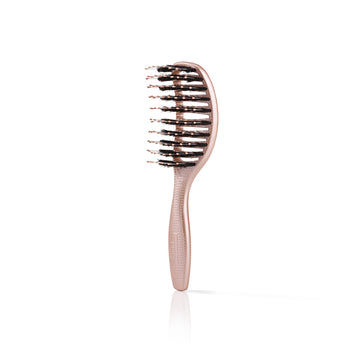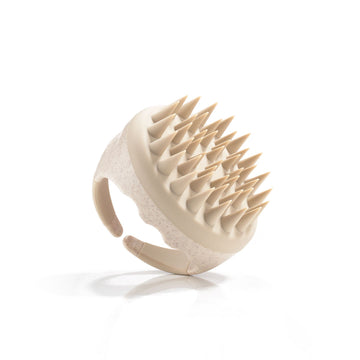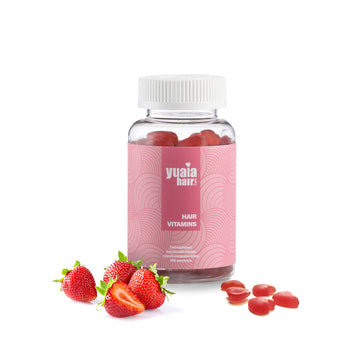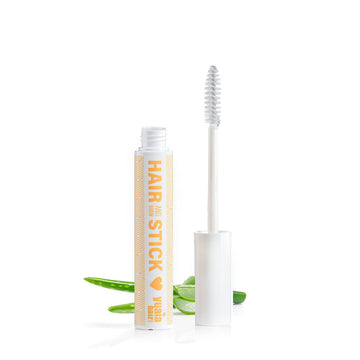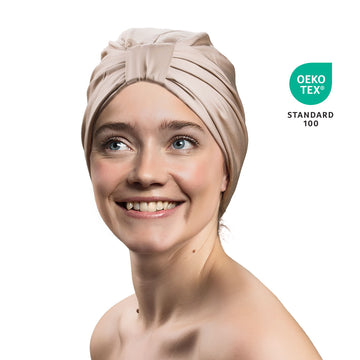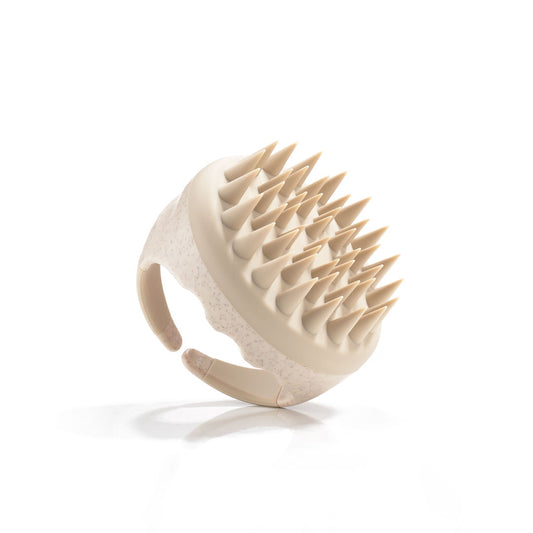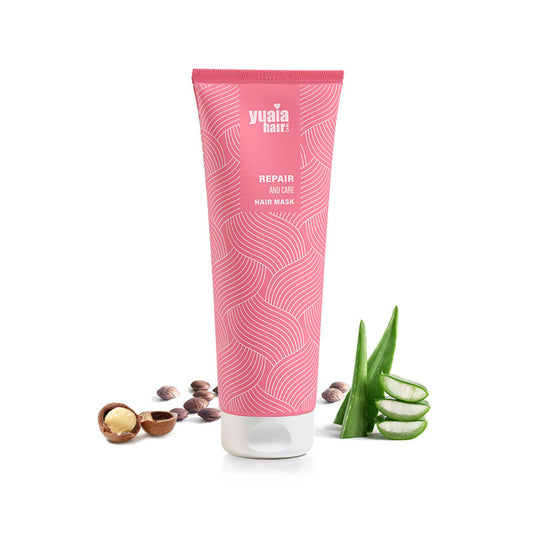
Benefits of regular scalp detoxification
Incorporating scalp detox into your hair care routine provides a wide range of benefits that support both immediate and long-term hair and scalp health.
This practice focuses on removing impurities, excess oil, and product buildup, which can otherwise compromise scalp function and hair quality.
-
Promotes healthier hair growth by ensuring that follicles remain clear, oxygenated, and free from obstruction. This creates the ideal conditions for nutrient absorption and supports the development of strong, resilient strands.
-
Helps alleviate common scalp issues such as dandruff, itchiness, and general irritation by reducing buildup and microbial imbalance that often lead to inflammation and discomfort.
-
Improves hair texture and shine, leaving it noticeably softer, smoother, and more manageable. Hair becomes less prone to dullness and heaviness caused by residue from styling products.
-
Enhances product efficacy, allowing shampoos, conditioners, masks, and scalp serums to work more effectively by improving their ability to reach the scalp surface without interference from buildup.
-
Balances the scalp environment over time by supporting a more consistent oil production cycle, helping reduce both dryness and excess sebum.
-
Acts as a preventive measure, shielding the scalp from environmental pollutants and the ongoing accumulation of styling agents.
Regular scalp detoxification encourages a healthier foundation for long-term hair vitality.
How to clean your scalp naturally at home
Several natural ingredients can be used to detox the scalp at home. These simple and gentle remedies often require little preparation and can be tailored to suit various scalp types.
Using natural methods avoids harsh chemicals and supports a more balanced scalp. Choosing a method that suits the season and your specific needs helps maintain long-term scalp health.
Apple cider vinegar rinse
An apple cider vinegar rinse offers a natural solution for improving scalp health and hair appearance. Known for its ability to rebalance the scalp’s pH, it gently removes excess buildup from styling products and hard water minerals without compromising the scalp’s natural oils. This makes it especially beneficial for those with sensitive, dry or irritated scalps. Its mild antibacterial and antifungal properties can help reduce itching, flaking and general discomfort, contributing to a more comfortable and cleaner scalp environment.
Beyond scalp care, apple cider vinegar helps smooth the hair cuticle, which may result in shinier, softer and less frizzy hair. For individuals seeking a gentle clarifying method without harsh surfactants, this rinse can serve as a practical addition to a regular hair care routine.
How to use it:
-
Mix one part apple cider vinegar with two parts water in a spray bottle or bowl.
-
Shampoo your hair as usual.
-
Apply the vinegar mixture directly to your scalp, focusing on areas with buildup or irritation.
-
Gently massage it in using circular motions for 2–3 minutes.
-
Let the mixture sit for an additional 3–5 minutes to allow the acidity to work.
-
Rinse thoroughly with cool water.
-
Repeat this process once every one to two weeks, depending on your scalp’s tolerance and buildup level.
Essential oils
Essential oils such as tea tree oil and peppermint oil play a notable role in scalp detox routines due to their natural antimicrobial and soothing properties.
Tea tree oil is especially recognised for its ability to reduce dandruff, alleviate itchiness and address irritation caused by excess oil, buildup or minor scalp imbalances. Its antifungal action helps keep the scalp clean and can support the unclogging of hair follicles, which is important for maintaining a healthy scalp surface.
Peppermint oil adds a cooling, refreshing effect and may also support improved blood flow to the scalp. This enhanced circulation can contribute to a more balanced scalp environment and may encourage the conditions needed for natural hair growth over time. When incorporated into a regular care routine, these essential oils can help maintain a healthier scalp and promote overall hair vitality.
How to use them:
-
Mix 2–3 drops of essential oil with one tablespoon of a carrier oil such as jojoba, coconut or almond oil.
-
Apply the mixture to the scalp and massage gently in circular motions for about 5 minutes.
-
Leave the oil blend on for 20–30 minutes to allow proper absorption.
-
Rinse thoroughly with lukewarm water and follow with a gentle shampoo.
-
Use this treatment once per week. Perform a patch test 24 hours before the first use to check for sensitivities.
DIY scalp scrubs
A homemade scrub with sugar and olive oil is a simple and effective way to exfoliate and nourish the scalp. Sugar removes dead skin cells and product buildup that can clog hair follicles and hinder healthy hair growth. Brown sugar is gentle for sensitive skin, while white sugar provides a more intense exfoliation.
Olive oil adds moisture and nourishment while soothing dryness and irritation. Together, sugar and oil create a balanced treatment that cleanses and softens the scalp. Adding activated charcoal gives the scrub an extra purifying effect, as the charcoal binds to toxins, excess oils, and product residue.
The scrub can also be customized with ingredients like aloe vera or essential oils to calm the scalp and support balance. This treatment is especially useful for those experiencing buildup, clogged follicles, or early signs of scalp acne.
How to use it:
-
Mix 2 tablespoons of sugar with 1 tablespoon of olive oil or aloe vera gel in a small bowl.
-
For added detox power, add 1 teaspoon of activated charcoal powder and stir until fully combined.
-
Dampen your scalp slightly with water to help distribute the mixture more evenly.
-
Apply the scrub directly to the scalp using your fingertips, section by section.
-
Massage gently in circular motions for 3–5 minutes to boost circulation and lift away impurities.
-
Let it sit for another 2–3 minutes.
-
Rinse thoroughly and follow up with a gentle, moisturizing shampoo to remove all residue.
Use this DIY scalp scrub once every two to three weeks for best results and to maintain balance without over-exfoliating.
Aloe vera gel
Naturally soothing and hydrating, aloe vera helps reduce inflammation and remove excess oil, making it especially useful for individuals with irritated or imbalanced scalps. The cooling nature of the gel provides immediate relief to itching or redness, while its high water content ensures gentle hydration without clogging the hair follicles.
Aloe vera contribute to healthy skin cell turnover and promote healing. It also provides proteolytic enzymes that assist in breaking down dead skin cells and clearing clogged follicles, improving scalp cleanliness and allowing better nutrient absorption.
Using aloe vera regularly can help restore the scalp’s moisture balance and may reduce dandruff and excess sebum over time. It’s a suitable remedy for nearly all scalp types, including sensitive skin.
How to use it:
-
Extract fresh gel from an aloe vera leaf or use a high-quality store-bought gel with minimal additives.
-
Apply a generous amount directly to the scalp, section by section.
-
Gently massage for 3–5 minutes to stimulate circulation and aid absorption.
-
Leave on for 15–20 minutes to allow the enzymes and nutrients to work.
-
Rinse thoroughly with lukewarm water and follow with a mild shampoo if needed.
Repeat this treatment once a week or as needed to maintain a soothed, nourished scalp.
Green tea rinse
Rich in antioxidants and anti-inflammatory compounds, green tea can calm irritation and help with dandruff. It contains polyphenols and catechins that fight oxidative stress, reduce inflammation, and support a healthier scalp microbiome.
Green tea may also help regulate sebum production, making it especially beneficial for oily or flaky scalps. Additionally, its antimicrobial properties can combat bacteria or fungi that may contribute to scalp discomfort.
How to use it:
-
Brew a strong cup of green tea using 2 bags or 2 teaspoons of loose leaves.
-
Let it steep for at least 10–15 minutes to maximize the nutrient release, then allow it to cool completely.
-
After shampooing, pour the cooled tea slowly over your scalp, massaging gently as you go.
-
Let it sit for 5–10 minutes to allow absorption.
-
Rinse with lukewarm water or leave it in as a no-rinse treatment for added shine and nourishment.
Use once a week to soothe irritation, balance oil, and refresh the scalp naturally.
Myths vs. facts about scalp detoxification
Myth 1: Scalp detox instantly repairs damaged hair
One common misconception is that scalp detox can immediately restore damaged hair. In reality, detoxing supports a healthy scalp environment, which may promote growth, but it does not directly repair existing hair damage. To see visible improvements, detoxing must be combined with regular conditioning and protective styling.
Myth 2: Only branded detox products are effective
Another myth is that only commercial detox products are effective. In fact, many natural and homemade treatments can be just as beneficial. These alternatives often provide a gentler and more affordable solution, helping to cleanse the scalp without introducing harsh chemicals.
Myth 3: Scalp detox should be done weekly
Some believe that weekly detoxing is necessary. However, cleansing too frequently can disrupt the scalp’s natural oil balance. This may result in dryness or lead to overproduction of sebum as a compensatory response. A more moderate detoxing schedule is typically more beneficial.
Myth 4: Detox accelerates hair growth
While detoxing creates a cleaner scalp environment that may support healthy hair conditions, it does not directly influence the speed of hair growth. Hair growth is determined by multiple factors, including genetics, nutrition, and hormonal health. Detoxing can be supportive, but it is not a solution on its own.
Setting realistic expectations
Clarifying these misconceptions helps establish realistic expectations. Scalp detox should be viewed as a supplementary step within a broader, consistent hair care routine. When used correctly, it can contribute to overall scalp health, but it is not a cure-all.
Precautions and considerations
Always perform a patch test when trying new ingredients. Over-exfoliating can lead to dryness or irritation, so moderation is key. Choose methods that match your scalp condition—dry, oily, sensitive, or combination—and seek professional advice for chronic issues such as severe dandruff, psoriasis, or hair loss.
Maintaining long-term scalp health through detox
A consistent scalp detox routine can rejuvenate the scalp and set the foundation for stronger, shinier hair. By using natural methods at home and paying attention to signs of buildup or imbalance, it’s possible to maintain scalp health without harsh chemicals. Integrating scalp detox into your monthly care regimen ensures that your scalp—and by extension, your hair—remains clean, nourished, and healthy.
Frequently Asked Questions
How often should I do a scalp detox?
Most people benefit from a scalp detox once or twice a month. Over-detoxing can disrupt your scalp’s natural balance, so adjust the frequency based on your hair type, scalp condition, and level of product buildup.
Can scalp detox help with dandruff?
Yes, regular scalp detoxification can help reduce dandruff by removing buildup, excess oil, and dead skin cells that contribute to flaking. Natural ingredients like tea tree oil and apple cider vinegar are especially effective for this purpose.
Are natural scalp detox methods safe for sensitive skin?
Most natural scalp detox methods are gentle, but it’s important to patch test new ingredients before full application. Choose soothing options like aloe vera or diluted apple cider vinegar, and avoid harsh scrubs if you have sensitive or irritated skin.
Will a scalp detox make my hair grow faster?
While a scalp detox creates a healthier environment for hair growth, it does not directly speed up hair growth. It can, however, help prevent issues that may hinder growth, such as clogged follicles or scalp inflammation.
What are the signs that I need a scalp detox?
Signs include persistent itching, oily roots, flakiness, scalp odor, slow hair growth, and hair products not working as effectively as before. If you notice these symptoms, a scalp detox may help restore balance.
 2-5 day delivery
2-5 day delivery
 25.000+ satisfied customers
25.000+ satisfied customers
 Satisfaction Guarantee
Satisfaction Guarantee

